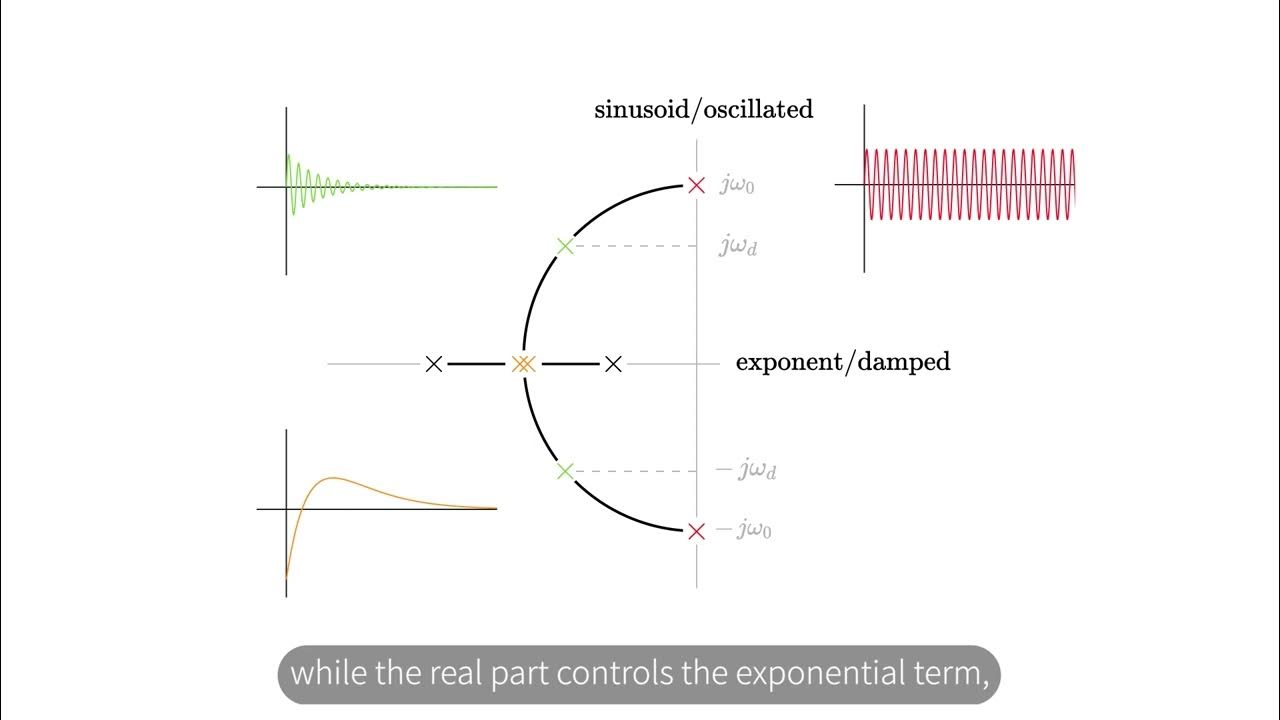7.5 Fungsi Singular (1 dari 3)
Summary
TLDRThis video delves into the application of specific functions in circuit analysis, focusing on the unit step function and the unit impulse function (Delta function). It explains how these functions simplify the analysis of electrical circuits by representing sudden changes in voltage or current. The unit step function describes a sudden jump in values, while the unit impulse function is the derivative of the step function, used to model shocks or impulses in a circuit. The video also highlights how these functions are beneficial for sampling and analyzing circuit behaviors at specific moments in time.
Takeaways
- 😀 The main focus of the script is on analyzing functions used in circuit analysis, specifically the unit step function and the unit impulse function.
- 😀 A unit step function represents a sudden change in voltage or current, typically used to model a sudden switch or change in a circuit.
- 😀 The unit step function graphically shows a sharp increase from 0 to a non-zero value (e.g., 5 amperes) at a specific time, such as t = 0.
- 😀 The mathematical definition of the unit step function is a discontinuous function, meaning it changes abruptly without a smooth transition.
- 😀 The unit impulse function, also known as the Dirac delta function, is the derivative of the unit step function.
- 😀 The unit impulse function is non-zero only at a single point, t = 0, and represents a sudden, infinite spike in current or voltage for an infinitesimally short duration.
- 😀 The unit impulse function is used to model shock or sudden impacts in circuits, like applying a brief current or voltage pulse.
- 😀 The impulse function is often used in circuit analysis for its ability to isolate specific events, making it useful for sampling or extracting values at precise moments.
- 😀 A mathematical expression is provided for how a general function interacts with the unit impulse function, resulting in the value of the function at the moment of the impulse.
- 😀 The script explains that the integral of a general function with a delta function results in the value of the function at the point of the impulse, which is crucial for signal sampling.
- 😀 The entire discussion is meant to explain the utility of these functions in circuit analysis, emphasizing their role in understanding and modeling sudden changes and impulses in electrical systems.
Q & A
What is the purpose of using singular functions in circuit analysis?
-Singular functions, such as the Unit Step and Delta Functions, are used to simplify the analysis of circuits, especially when dealing with sudden changes in voltage or current.
What is a Unit Step Function, and how is it represented?
-A Unit Step Function is a mathematical function used to represent sudden changes in voltage or current in circuits. It is typically graphically depicted as a function that jumps from 0 to a certain value, like 5 amperes, at a specific time, t = 0.
How does the Unit Step Function behave mathematically?
-Mathematically, the Unit Step Function is represented as 'u(t)' and is equal to 0 for t < 0, and equal to 1 for t > 0. It can also be shifted in time by adjusting the value of t.
What is the Unit Impulse Function, and how is it related to the Unit Step Function?
-The Unit Impulse Function, also called the Delta Function, is the derivative of the Unit Step Function. It represents an instantaneous change or shock in a circuit, often visualized as a spike at a specific point in time.
What is the key difference between the Unit Step Function and the Unit Impulse Function?
-The Unit Step Function represents a sudden, sustained change in voltage or current, while the Unit Impulse Function represents a sharp, instantaneous change at a single point in time.
What is the mathematical representation of the Unit Impulse Function?
-Mathematically, the Unit Impulse Function is written as 'delta(t)' and is equal to 0 for t ≠ 0, with a spike at t = 0, indicating an instantaneous change.
What is the practical application of the Unit Impulse Function in circuit analysis?
-The Unit Impulse Function is used to model instantaneous changes or shocks in circuits, such as when a circuit receives a sudden burst of current or voltage.
How does the Delta Function interact with other functions in mathematical analysis?
-When integrated with a function, the Delta Function samples that function at a specific point in time. For example, integrating a function with delta(t - t0) results in the value of the function at t = t0.
What is the significance of using the Unit Impulse Function for sampling a function?
-The Unit Impulse Function is crucial in signal processing and circuit analysis for sampling a function at specific points, allowing engineers to extract key values from complex signals.
Can the Unit Step Function be shifted in time? If so, how is this represented?
-Yes, the Unit Step Function can be shifted in time. This is done by adjusting the function's argument, such as writing 'u(t - t0)', which shifts the step function to occur at t = t0.
Outlines

This section is available to paid users only. Please upgrade to access this part.
Upgrade NowMindmap

This section is available to paid users only. Please upgrade to access this part.
Upgrade NowKeywords

This section is available to paid users only. Please upgrade to access this part.
Upgrade NowHighlights

This section is available to paid users only. Please upgrade to access this part.
Upgrade NowTranscripts

This section is available to paid users only. Please upgrade to access this part.
Upgrade NowBrowse More Related Video
5.0 / 5 (0 votes)





